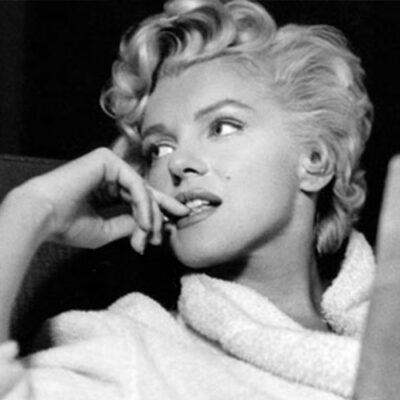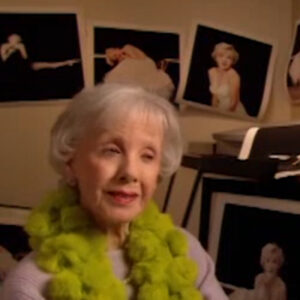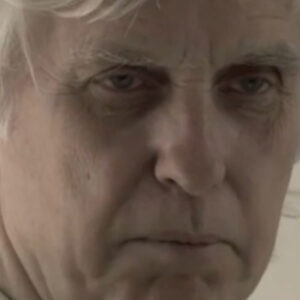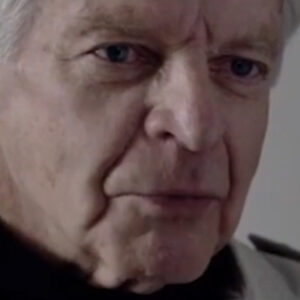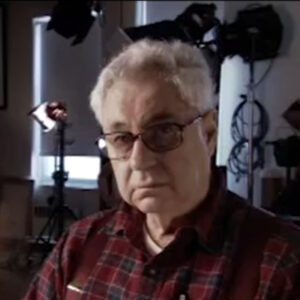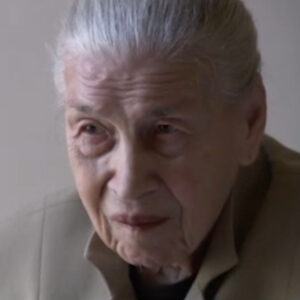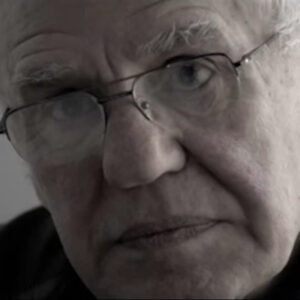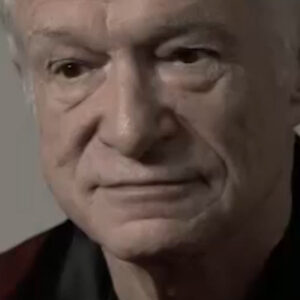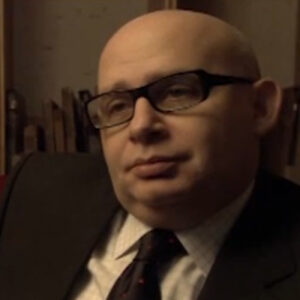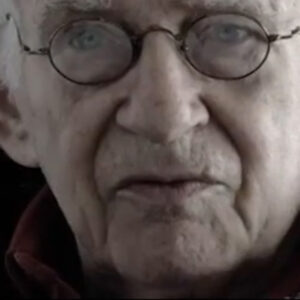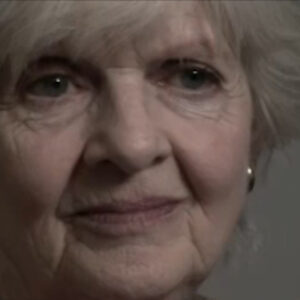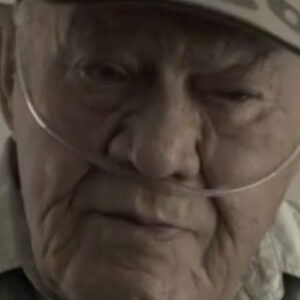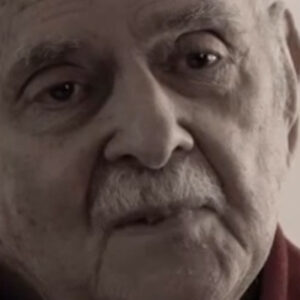Interviewer: All right. OK. So let’s start with how you happen to be, how old you are and how you have heard of this very historic, very amazing what is called obesity.
Leif-Erik Nygards: Well, I worked for Brookstone and we had the shoot with Marilyn and I think February or March in 62 in Los Angeles. And the smallest SMI nudes, she was holding a scarf in front of her. And Burt showed these pictures to Alexander Lieberman of Vogue. And he didn’t like it. He wanted something else. So it was decided for a second shoot that took place in June, late June. And that was a four day shoot. And Barb Simpson came with she was the fashion editor. Cannot the hairdresser came with Peter Diehl, the studio manager. Stone, of course, and myself then. And we worked to shoot Marilyn for several pages in Vogue magazine, a fashion story.
Interviewer: That you’re going to fashion a story with her. It was it was an entirely different take. And it wasn’t a movie star shot. This wasn’t a day in the life of me. This is a fashion show. Yes, it was really about that. And when you find a fashion shooting, especially for Vogue. This wasn’t just fashion because.
Leif-Erik Nygards: It was rather important because BAPS Simpson, she was the fashion editor of Vogue and she was with them. She sat in the corner, as usual, but there needed point and said Marvelous Burt all the time because she just took a glimpse at Marilyn and looked and said, it’s marvelous book. But there was lots of different shots, stuff, very exclusive clothing. And the candidate did a lot of different hairdos on Marilyn.
Interviewer: But she is not traditionally and we also talked several weeks ago, he says hasn’t beaten.
Leif-Erik Nygards: Yes.
Interviewer: I think he does. And one of the things he was talking about was your body, you see for that time. And certainly it’s not a fashion line.
Leif-Erik Nygards: No, it isn’t. It’s more to curvy to be a fashion body. But somehow I think they had picked the right clothes so it wouldn’t come through as much. It was fur coats and dresses that didn’t show the curves so much. So I think it was later published in Vogue because she died before Vogue published the story. And then they made a memorial on eight pages of her with these pictures. And they were you couldn’t really see it was fashion. It was more in a dictatorial story. And I think that’s the way Burt wanted it to. He wanted to do something. I it’s not just high fashion. Just show Marilyn inexpensive clothing.
Interviewer: Which is in itself. Really.
Leif-Erik Nygards: Yes, it is. So and they she even wore a black wig on some of the photographs and they used to joke with her. She told me she wanted to go to Sweden and Norway on vacation. So I said, you should wear that black wig when you go to Sweden so they don’t recognize you. Otherwise there will be trouble for you on this trip.
Interviewer: At that point, he says he sees you. He really was international.
Leif-Erik Nygards: Oh, yes. She I would say she was the most well known female movie star.
Interviewer: What would you say now?
Leif-Erik Nygards: I would say that if you look back at 20th century, she’s probably the most famous woman.
Interviewer: She’s still these walls.
Leif-Erik Nygards: Yes. I would think she is. I can’t think of anybody else that’s more famous or well-known.
Interviewer: Topless. However, what she was like, this was an extended shoot for the period and that was on the shooting march along. People I mean, people like you, people who had long years, long relationship, you know, it may have happened, you know.
Leif-Erik Nygards: While she was supposed to come to the Belanger old town at two o’clock. I don’t know what they post in the week, but it was two o’clock anyhow. And she didn’t show up. And we waited and waited and we waited. Five thirty. She came and sat down. It took a long. Time to put makeup on them, to do the hair and so on, so I think we started to shoot around 8:00. And because of that, the shooting went on until 3:00 in the morning.
Interviewer: I mean, she was notoriously late.
Leif-Erik Nygards: Yes, she was. Every time. And she brought your niece with her. That was her maid, I think. But later on, that was on the first day your niece both with and then Pat Newcomb came with her. She was the personal William Morris, I believe, that handled her. I thought she was, at least to me. She was very nice. And that surprised me because I was absolutely the least important person there. If there’d been had been a totem pole, you know, she would have been high up and stone and Eucumbene Cannon and so on. I would have been below the ground, I say on that totem pole. But she she took time and we spoke and we discussed things. And I asked her about the movie that she just had finished, the poor showing then The Misfits. And one of my favorite actors, is he still one of my favorite actors? Montgomery Clift was in the movie. So I happened to tell Marilyn I really like Montgomery Clift. And she said, you know what? He’s the only one in Hollywood worse off than me. So what could you say done.
Interviewer: You said and did you feel at this point because this was very late. Yeah, just all that was you, Sidney.
Leif-Erik Nygards: Yes, she was drinking champagne. I was drinking coke with only 22. But no, not really. But I felt like she had ups and downs like this. You know, she was not like me or you. She must have had very high ups and downs. And she looked nice. She was I don’t think she was that stunning myself, especially not without makeup. But she was her character was very different. And she was absolutely one of a kind. And, you know, she was Marilyn Monroe to me. She wasn’t Marilyn Monroe, though, because I got another relationship with her. So I always think of her as a Norma Jean Baker, because I think I got to know deep private person and not the Glancy person.
Leif-Erik Nygards: I mean, it was just it was like talking to a girl or a woman in my home village and not to Jean, most famous movie star. And I thought that was very interesting. And when I meet movie stars nowadays, they are movie stars and they’re like her.
Interviewer: So she came as much as she offered. I mean, she went off makeup. You know, I think by now she really was much more on track of how to handle.
Leif-Erik Nygards: You know, no, but I think she liked to do things herself, really. She had Joe with the guy that made her makeup always. He was there and he knew how to drink champagne. And he was like a fish.
Interviewer: Right?
Leif-Erik Nygards: No, no, no. She wasn’t she didn’t drink that much. But she took a sip then and then. But he was yeah. He was like a big fish.
Interviewer: Over those days. I mean, you decide what was what were the best parts of the city. There’s an enormous range.
Leif-Erik Nygards: Yes. Yes.
Interviewer: The rooms will be birds way of working.
Leif-Erik Nygards: You know, he wanted to get these different moods, really. And I think he got them rather well. And he he kind of concentrated very hard to get something out of her like this. And lots of times he succeeded. Sometimes he didn’t. But those pictures are not known, really. There was.
Interviewer: He famously exiled, but he famously read it.
Leif-Erik Nygards: I don’t know. But also, when you talk about photographs that she didn’t like. You know, that first shoot that we did in March? She wanted to approve the pictures. And those pictures she didn’t like, she had made the crossing with lipstick. And when she ran out of lipstick, she had used the hairpin to scratch. So some of those pictures were destroyed and some were good. But she didn’t like them. And then. Then they were lost forever.
Interviewer: I’ll tell the story of the day. Explain. She said they were in this case. Yes. She said, you always say you can’t touch what has other people in it. You don’t like it. That’s too bad.
Leif-Erik Nygards: Yeah.
Interviewer: But she said that she had seen it like this. .
Leif-Erik Nygards: Yeah.
Interviewer: It’s telling the story better. You know she does. She did.
Leif-Erik Nygards: Yes, I think so. But on the last show, she never came to see it because she died before and it was more of a fashion shoot and not so at least those pictures that were published were old fashion pictures. But on the very last day, we were finished with Bo and both took a lot of my nudes of her. And as I remember it, he tried to get in some nude shots, too, but she wouldn’t do it. But you thought it was her way of probably telling that she was the boss and did what she wanted.
Interviewer: This is not a person who was shy.
Leif-Erik Nygards: No, I don’t think so, because when I got the picture, I can just tell how it was. Stone had left all of a sudden because he wanted to go to New York and take the redeye sleeper the night flight. And it happened very suddenly. He just took off and disappeared, took a cab to the airport. And I was alone with Marilyn in the studio. And she sat on the bed, wrapped in a sheet, and there had just stuck out to the sheets. It looked like she was a mummy, more or less, you know, sitting there. And I thought. I thought I must have a picture of Marilyn because all my friends in Sweden, they would just laugh at me. If I said I met her, they would say, tell us another story. And so I asked Marilyn, can I take just one frame of you? And she said, Of course. So I went to get my camera after my bag. And when I turned around, she either unwrapped herself from the sheet and, like, totally nude on the bed. And the first thing I thought, Jesus, I thought, I can’t show this picture to my mother. But I just acted like this was nothing. And I think the camera took the picture. And I should have taken two pictures because when the flash went up, she lifted up her head and smiled. But then I had already pulled the sinks. I was very stupid. I asked for one picture to have as a memory. And I got it. And I should be grateful.
Interviewer: You know.
Leif-Erik Nygards: But the other one, I think, would have been even better because it wasn’t just a Hollywood smile. It puts a human smile she had. And I can still see it, but only in my head.
Interviewer: That’s great. Yeah, she she writes. When you look at the city, even even by scar.
Leif-Erik Nygards: Yes, that’s right. That’s from the first sitting when you can see the scars of the second sitting. They were gone.
Interviewer: But she was completely unabashed about it. And she did it.
Leif-Erik Nygards: She you know, she. She was not shy in that way.
Interviewer: Well, she was.
Leif-Erik Nygards: She could be difficult with other people to meet. I was very surprised that she was very nice to me. And maybe that because I was who I think it was that way and that. Yeah, but I sense that she could be difficult at times, you know? And I think also that one reason that boat left was that there are issues that was very good, but it started to go down a little bit. Then I think that’s my own thinking, that Burke was afraid of getting a lot of pictures scratched. I think he wanted to leave while they were still on good. They had good feelings with each other. That’s yours. But what I think could have been one reason why he left so quickly.
Interviewer: Was she tiring of his methods?
Leif-Erik Nygards: I think she was started to be tired of the whole shoot. He had been shooting for four days. And I think that would do that was a little bit too much.
Interviewer: It’s a volume that is unbelievable.
Leif-Erik Nygards: Yes. Yes.
Interviewer: Once this started to go, was it one makes the assumption even in 40.
Leif-Erik Nygards: But it took so much time for makeup and hair. So on the first shoot. I think we shot over 70 rolls of pictures on that. The one she had shortly after she had their gal brother operation in March done and maybe be shot twice as many on the four day shoot. But that first time, there was no hair to be done. No makeup to be put on and all that. So it just couldn’t shoot, shoot, shoot, shoot.
Interviewer: That’s easier to do without all that.
Leif-Erik Nygards: No, she was, you see, most of the time.
Interviewer: I think I mean, there’s no question.
Leif-Erik Nygards: She’d like to be photographed. And that that that that made her feel good. I think.
Interviewer: This is very easy to smile that you missed was really Norma Jean side and you felt to inside. She certainly did. Yeah. She certainly considered the Marilyn Monroe aspect of herself something she could turn on and off.
Leif-Erik Nygards: Yes, certainly. I think so.
Interviewer: Can you talk about that aspect of it? I mean, just that.
Leif-Erik Nygards: Well, when you met her without makeup and anything, she was not Marilyn Monroe. Marilyn Monroe was put down in the dressing room. And when she walked out to be photographed, she was all of a sudden Marilyn Monroe. And she was two persons in one. I think it was Norma Jean and Marilyn Monroe in the same person, which has nothing caused her a little bit. Yes. It was rather hard to have that setup. I think.
Interviewer: When you see her by the time of the march, do you make of this until you get this face that you say kids do and we have this very early? You know, I’m sure you’ve seen them, too, that I’m reading D.A. work very early stuff when her face is very fresh. Yes. We have one shot. In fact, it was shot of her completely. I made it to about the mid 50s. So it’s a combination based in a funny way.
Leif-Erik Nygards: Yeah.
Interviewer: It’s kind of the Norma Jean phase. But there’s Marilyn’s lurking there because the hair is long, which is made. And she’s also also a little untroubled selfie all the time.
Leif-Erik Nygards: Yeah. I also think that the Sternin in L.A. took some good pictures of her, especially one when she looks very fragile and very much Norma Jean. And I think it’s a jack bender that’s in the picture as well. But if it could Jack Benny off, it’s. It’s her and I think it’s her. The way she was in The Misfits. Very fragile seeking person.
Interviewer: Well, it’s very funny because he was.
Leif-Erik Nygards: I don’t. I never met him. What I would like to to meet him.
Interviewer: You would love to meet and me. Let each other. He is he’s divine in every way. I see. He’s every bit as a female. He’s constantly wearing his.
Leif-Erik Nygards: Yes.
Interviewer: But he’s in good shape with the emphysema. That’s great. He’s great. That’s very.
Leif-Erik Nygards: It’s very good.
Interviewer: It’s very.
Leif-Erik Nygards: It’s finished. Biscuit feel, as the Germans say, fingertip sense. You know, it’s really good.
Interviewer: It is really good. What do you say about this? Great. Because I’ve only I I’ve seen it many times. But when you what you his little he’s got kind of funny little room. Then have you have him. He’s got cut outs of Sammy Davis Jr. He’s got Louis Armstrong lifesize sitting on that stool. And there’s that Marilyn picture with the picture is just a picture. But Jack Benny is not in it to see his shot of her, you know, in his book when you open the page. You have to ask him this. There’s Jack Benny. So suddenly the context of that picture changed.
Leif-Erik Nygards: Yes, it does. But he’s in the picture. It’s much stronger without him that there are really two separate pictures in one.
Interviewer: Absolutely right. Do you also have, you know, just for a minute, the Arnold Newman shots and here with Carl Sandburg?
Leif-Erik Nygards: No, I haven’t seen that.
Interviewer: My head. You do the same thing. He has a shot of her where she’s very close to Carl Sandburg talking to her. Right. Right. In the same area. 1962. And then he cropped her out. And it’s exactly the same thing. You look at this picture and then you look at that picture. They don’t look like the same picture at all. And you realize the same picture.
Leif-Erik Nygards: I’ve seen her rather good photograph of her, too, with Albert Einstein. Yes. I think it’s taken in Princeton, in the garden or somewhere. And that looks very if she is herself. They’re kind of she’s not Marilyn. She’s just friendly with the Einstein.
Interviewer: I is missing.
Leif-Erik Nygards: Yeah. I had had some seafood salad for lunch and somehow I got very, very sick. And Marilyn, she was very concerned. So she sent for her doctor and he came and gave me a shot. He was about to leave. And then she said, isn’t it better if you stay and give him a second shot? And he did. So he’s just hung around there. And I got the second shot them. She really took care of me and Stern was sitting with them. Yes. I think because he said she mothers who I didn’t know what it meant because my English was not that good at that time. But I know now what it meant.
Interviewer: Well, how was it working with Stern? You were a young guy, right?
Leif-Erik Nygards: He was very nice. I like him. He was, sir. But he was a photographer. Like Marilyn was in a way, too. He was up and now he could be extremely good and sometimes it didn’t click, but most of the time it did. But he was a little bit up and down while I later worked with Irving Penn. And he was his. He was never bad. He was always good or very good.
Interviewer: You know, speaking of, someone did an incredible fashion work and fashion model.
Leif-Erik Nygards: Yes, right, Lisa? Yes.
Interviewer: Right.
Leif-Erik Nygards: She made the strongest leg I ever had. She was Swedish.
Interviewer: He he ever thought of after.
Leif-Erik Nygards: I used to when.
Interviewer: Marilyn made.
Leif-Erik Nygards: No, he didn’t. I don’t think he did. No, unfortunately not. He photographed a lot of other movie people. I was there when he did that. And yeah, that was a very unfortunate I think Cecil Beaton photographed around that. He has a very nice portrait of her.
Interviewer: Yes, yes, yes, yes. And as I said that there, I mean, we we chatted with his assistant, and that was another one where he she said she came in now because, again, this was in this sort of healthy period in the mid 50s.
Leif-Erik Nygards: Yes.
Interviewer: She came in and just was pliable. She gets ready to do anything. They had a completely apparently wonderful just a wonderful day with her.
Leif-Erik Nygards: Yeah. She looks like a flower that’s at its best, you know, really a blooming kind of in that picture, I think that I have seen. This is a beacon.
Interviewer: Well, I did have this when I was starting to get you what she’s rather very uninhibited, daring and uninhibited about sort of the state she’s in. In those pictures, even with the scar. And whenever she starts to look, by the time that you are doing this, she looks worn out. I mean, the makeup, you feel the makeup on her face as opposed to other times where you don’t even know the face is made up and she’s dramatically made up. Somehow they are shots of the birds during this last inning that are very, I think, savage. And it’s sad not for what you see so much, but for what you feel.
Leif-Erik Nygards: You know, I think she she was not happy as a person, though, because otherwise she wouldn’t have made the comment about Montgomery Clift and the. I don’t know if I should say this, but. Pat Newcombe. She mentioned that she had tried to commit suicide twice before. No. OK.
Interviewer: Because I’m really not doing that.
Leif-Erik Nygards: No. No, I’m just telling you that the day was. That’s what she told us. Or we were sitting. I was taking pets pass photo for because she was gonna get to make make a trip to Europe. And then. And I was going to try to have Shotover so she could get the passport.
Interviewer: Yeah. Yeah, yeah, yeah. Yeah. Was he a reporter between. I mean, did you feel she liked Berg? Do you feel that?
Leif-Erik Nygards: Yes. Especially in the middle of the sitting in the second or third day? I would say so. But at the end, it was I think she got a little bit worn out. It was very, very, very warm in Los Angeles. Yes. Those days we were there. I think I had to go and get more Dom Perignon because they drank up six bottles. So I had to go and get three more bottles at the liquor store. And there were three forest fires going on in L.A. at the time. So the town was foggy, smoggy, smelling burnt. And the as I remember it, they said on the radio it was hundred and fourteen degrees and it was kind of a record. So that was another reason maybe shot all the pictures that night because it cooled down that they are conditions. Couldn’t keep up with the heat. Kind of. Yes.
Interviewer: I mean, it’s my sense also when we read this, she kind of was better at night.
Leif-Erik Nygards: Do I? She was a night person, I believe. Another reason why she was late, maybe.
Interviewer: Well, your picture. Would you like to take it with you? She has also had some mileage of its own. I mean, it’s absolutely amazing. And it’s a personal.
Leif-Erik Nygards: So it is a personal thing. As I saw it. It was a personal thing between me and her. And as I said before, I was very surprised. But she had taken off the sheet and exposed to chef herself the way she did.
Interviewer: How, how? And it was I was at the end and.
Leif-Erik Nygards: She I took my camera down and walked to my bag and she walked walked up and put on a white robe. And we spoke a little bit. Then she said, I call you in case I go to Sweden on vacation. And she never called.
Interviewer: I do, like you said, even talking about. I think there really was always that great compassion. It seems to be I seem to hear that she was very kind to people.
Leif-Erik Nygards: Yes, I think so. She was a kind person. But she also felt the times when people used her. And I think she could be very difficult.
Interviewer: Well, we have heard your very last interview that she did, which was down on us just days before. She must have been because she died on the fourth. This was done, I think. And she she is a little. Yeah. She by then, I think is some of the Boston worn off and using her own understanding of being used, feeling a bit, I think, feeling a bit pushed about know. And so I think that is reflected in some ways it save us from how to make it less how she looks as. Yes, he has. She had she she had grown very, you know, very used to, I think, in a way to be sort of pushed about.
Leif-Erik Nygards: I can I can see that now. But I hadn’t seen too many photographs of Marilyn before, you know. So for me, it was all new when I met Marilyn in March of 1962 and in June again then and I thought that was the way she was supposed to look. But then when you see other pictures like those I mentioned before, stones and Wingert Pain since the Beeton’s. She had a different look. More much fresher look and much more. Yes. I like that look much better. She was she was then Norma Jean in those pictures and not Marilyn Monroe. And I think I would have liked to use Norma Jean in in in the films as well, because I think that would have been better. The makeup and everything else was makeup.
Interviewer: I think Marilyn Monroe was pretty heavy.
Leif-Erik Nygards: Yes. Yeah. I think Marilyn Monroe made her unhappy. And that’s my personal thing. I may be a hundred percent wrong, but I don’t think so.
Interviewer: Well, now you were a very famous shoot. Now, 50 years later, 40 years later, 44 years before, was 60 to 62. So full scale. But she is, as we say, she remains the greatest, perhaps the most famous and perhaps the most photographed women of all time. Who is there? This is very key moment as you see it. I do sometimes pinch yourself and just think this is a rather historic moment. This is a rather amazing moment.
Leif-Erik Nygards: I didn’t realize that then because you never you didn’t know that she was going to die and everything else was going to happen. And I was there to work. And I did work in here and there. I had some conversations with Marilyn, done the movie. And then the eventual trip to Scandinavia eventually took care of me when I was sick and so on. So she. I don’t know when you’re right in the moment. You don’t realize the way it is. You know the importance you. It’s like if you’re in a Vaud taking pictures, you don’t realize what’s going on. You just look for a picture all the time. And it.
Leif-Erik Nygards: Also you are a very young guy. And she was the most famous movie star in the world. Then how did it also feel, the the Virgin?
Leif-Erik Nygards: Yeah. I was amazed that she was so kind to me because I had met there Liz Taylor earlier and there was no contact between us whatsoever. And so I just thought to be the same with Marilyn. But it wasn’t.
Interviewer: I think I think she never I think she I mean, she had a very at arm’s length relationship.
Leif-Erik Nygards: Yes, I think you’re right. I think she. Yes, Gene. Yes. Yes, she. I think you’re very right when you say that. So, uh. You know that. I wish she had lived longer, but it would have been very difficult to see her as an 80 year old person this year. She would have been 80 this year. And those icons you have had. You know, Jimmy Dean, Elvis Presley, Marilyn Monroe. I don’t think they could have survived living past 50 because it was it wouldn’t have been right in some way.
Interviewer: You’re not just talking about this type of beauty or type of olive. Oh, her as rather a mirror to me.
Leif-Erik Nygards: She looked very Scandinavian and there there. I don’t know who her father was. But there is some saying that the person Swede that moved to Norway and later moved to America. But the name Mortensen. But I don’t know if that’s true or not. But. But she she looked she looked like she could be from my home.
Interviewer: It’s not her. The creation of this person. And she did. And she so did do it. It’s really extraordinary when you do think of the trajectory of her house. There are those rather unremarkable kind of cute girl home girl. And this transformation that she engineered.
Leif-Erik Nygards: Yeah, but she had it was her character that was outstanding, not her looks or her body. I don’t think you see hundreds of girls, but I worked a pendant and stones to do the most beautiful models in the world, came in and out every day. And but Marilyn was a different person. She was absolutely one of a kind. And all these stars I knew. Great. I got be a little bit. Then she was also absolutely one of a kind. And so was a deep tissue. I met a few times, too. She was one of a kind. Absolutely. Well, those three were superstars or mega stars. And they I think you have a saying in America to be good, you have to be different and Davor different in all of us.
Interviewer: And she’s in very good company with those other two. She still transcends all.
Leif-Erik Nygards: Yes, she does. So.
Interviewer: Thank you. Do you think we left anything here?
Leif-Erik Nygards: I don’t know, though. I think one thing when I when she was so kind to me when I was sick, I had the feeling that she really wanted to have a child to take care of.
Interviewer: Well.
Leif-Erik Nygards: I got that feeling that. And I think maybe I’m totally wrong, but I think that she would have loved to have had the child.
Interviewer: Well, she’s would have loved you. I mean, these seem to know that in reading it in the stories. Is that mischievous justice on the side? Sam Sharp. Sam Sharp. Who may be just another one of those guys I’ve been photographing before. Evan was very sweet about it. Very well. She had a miscarriage.
Leif-Erik Nygards: Yeah. She had several. I think.
Interviewer: She had a right of went right. The late 50s and Arthur Miller had written a story short story that appeared in Esquire, which was the root of the misfits in which that character is very minor, really about the three guys really loves to be cowboys. I hope, Shaw, you’re in the hospital and Arthur was there. And I guess he came out, said door, you should write that as a film and you should write that role for her and give this to her as a gift, because it’s probably never going to be. I think that was when she learned that she would probably not be able to have a child. And she was she was distraught and she was very lost. And he did that. And, of course, it ended the marriage. So it wasn’t it was already in trouble, I think. Yes. But I think you’re very right about that, that she you know, and.
Leif-Erik Nygards: I felt that she was so very kind and I thought of it afterwards, too, when I got older and just Stern said, Mother, you and I thought. I think she wanted the child to take care of. But also, when you bring up the Misfits and the script, that’s it was Norma Jeane in that movie. It wasn’t Marilyn Monroe. It was just the way she was. She was playing herself. And then she left her soul open to see everybody to look at kind of.
Interviewer: I completely agree with you. I actually get a film.
Leif-Erik Nygards: Well, you did.
Interviewer: That I agree with you completely. Because in your pieces also that I know from reading Arthur Miller stuff, I hope you know. I know she’s in. Is there any you know, there are things like when you when she’s talking about we remember when she says, well, when you win, why you within it after she gets the divorce. Absolutely. I think it was I think was 100 percent what was going on in her life. She felt and I don’t think there was any. I don’t think it was any space in between. I think what she saw was her.
Leif-Erik Nygards: Yes, it was the way I found her anyhow. I thought it was perfectly written just for her. And another thing that I thought was strange, too. They were divorced and separated. And as you said before, Magnum had photographers being sent there. And one photographer was being born. You know that. And she married Arthur Miller. And she died a few years ago, a couple of years before Arthur this fiscal year.
Interviewer: And this is my film. I see. Well, she took one of the most definitive photographs ever of the two of them where he’s standing on the side and she’s looking out the window.
Leif-Erik Nygards: Yeah.

